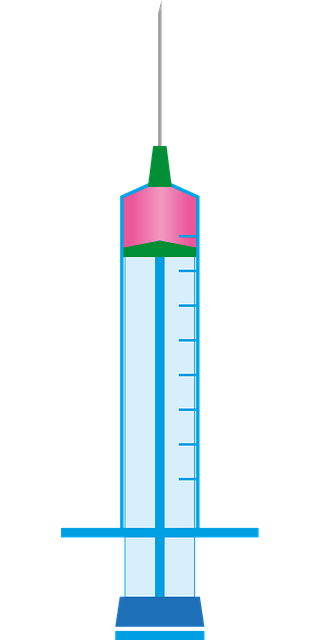Steroid injections for joint inflammation target ankle, wrist, and elbow areas to swiftly reduce swelling and pain, aiding mobility. Minimally invasive with imaging guidance, these injections offer rapid relief from arthritis, tendinitis, and sprains, but carry risks like joint weakness and need open dialogue with healthcare providers for optimal recovery.
Corticosteroid injections have emerged as a powerful tool in managing severe joint inflammation in the ankle, wrist, and elbow. This targeted approach offers significant advantages over systemic treatments by directly reducing swelling and pain at the affected site. The article delves into the mechanics of these injections, explores their use in specific joints, details the procedure, and examines the benefits, risks, and recovery timeline associated with this effective treatment option for steroid injections for joint inflammation.
Understanding Corticosteroid Injections for Joint Inflammation
Corticosteroid injections are a common treatment option for individuals experiencing severe joint inflammation, particularly in the ankle, wrist, and elbow areas. These powerful anti-inflammatory medications work by reducing swelling and pain associated with conditions like arthritis or an acute injury. The injection directly targets the affected joint, offering fast relief and improved mobility.
During the procedure, a healthcare professional inserts the corticosteroid into the joint space, carefully navigating through nearby tissues. This targeted approach ensures minimal damage to surrounding areas, making it an effective method for managing localized inflammation. Steroid injections for joint inflammation have been proven to provide rapid and sustained results, allowing patients to resume their daily activities with reduced discomfort.
Ankle, Wrist, and Elbow: Ideal Targets for Steroid Injections
The ankle, wrist, and elbow joints are particularly well-suited candidates for corticosteroid injections to treat joint inflammation. These joints are often affected by conditions such as arthritis, tendinitis, or sprains, which can lead to significant pain and limited mobility. Steroid injections offer a direct and effective way to reduce inflammation and provide rapid relief in these specific areas.
Compared to other joints, the ankle, wrist, and elbow have unique anatomical features that make them ideal targets for this treatment. Their relatively smaller size and more accessible locations allow for precise administration of steroids, minimizing risks associated with injection. This targeted approach ensures that the medication reaches the affected areas directly, enhancing its therapeutic effects while potentially reducing side effects in surrounding tissues.
The Procedure: How Are These Injections Administered?
Corticosteroid injections for joint inflammation are a minimally invasive procedure commonly used to alleviate pain and reduce swelling in affected areas like the ankle, wrist, and elbow. The process involves inserting a small needle into the joint space, guiding it precisely using imaging guidance such as ultrasound or X-ray, and then injecting a corticosteroid solution. This powerful anti-inflammatory medication works by rapidly decreasing inflammation and pain, offering significant relief for patients suffering from conditions like arthritis, tendinitis, or sprains.
After cleaning the skin around the injection site, the healthcare provider numbs the area with a local anesthetic to minimize discomfort. Once the needle is correctly positioned, the corticosteroid mixture is injected, typically containing a combination of steroids and a local anesthetic. The entire procedure usually takes only a few minutes, after which patients may experience immediate or gradual relief, depending on the underlying condition and individual response.
Benefits, Risks, and Recovery: What to Expect
Steroid injections for joint inflammation can offer significant relief and improved mobility for patients suffering from ankle, wrist, or elbow pain. The main benefits include rapid reduction of swelling and inflammation, allowing for faster healing and reduced discomfort. Additionally, these injections can provide long-lasting effects, sometimes lasting several months, which can be particularly beneficial for those with chronic conditions.
However, there are also risks associated with corticosteroid injections. Potential side effects may include joint weakness, tendon rupture, and skin thinning at the injection site. In rare cases, infections or blood clots could occur. It’s crucial to discuss these risks openly with your healthcare provider. During recovery, you can expect some temporary pain and swelling at the injection site, but most patients experience a marked improvement in their symptoms within a few days to a week. Following your doctor’s post-injection care instructions is essential for optimal healing and minimising complications.
Corticosteroid injections for joint inflammation have proven effective in alleviating pain and reducing swelling in targeted areas like the ankle, wrist, and elbow. By administering these injections directly into affected joints, medical professionals can offer rapid relief, enabling patients to regain mobility and resume activities. However, it’s crucial to weigh the benefits against potential risks, such as infection or tendon damage, and follow proper recovery guidelines for optimal outcomes. With appropriate care and monitoring, steroid injections can serve as a valuable tool in managing joint inflammation, ensuring improved quality of life for patients suffering from painful conditions.
